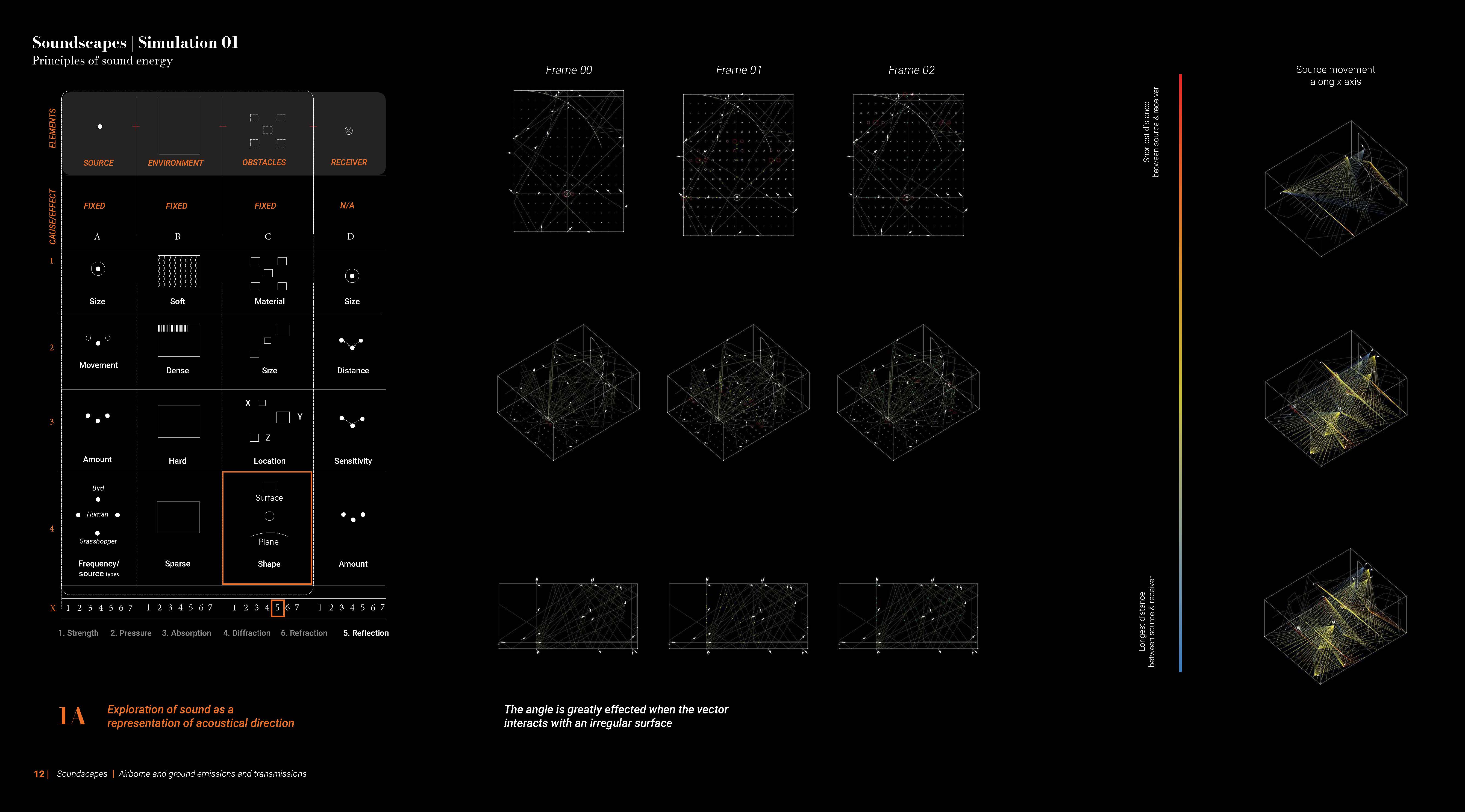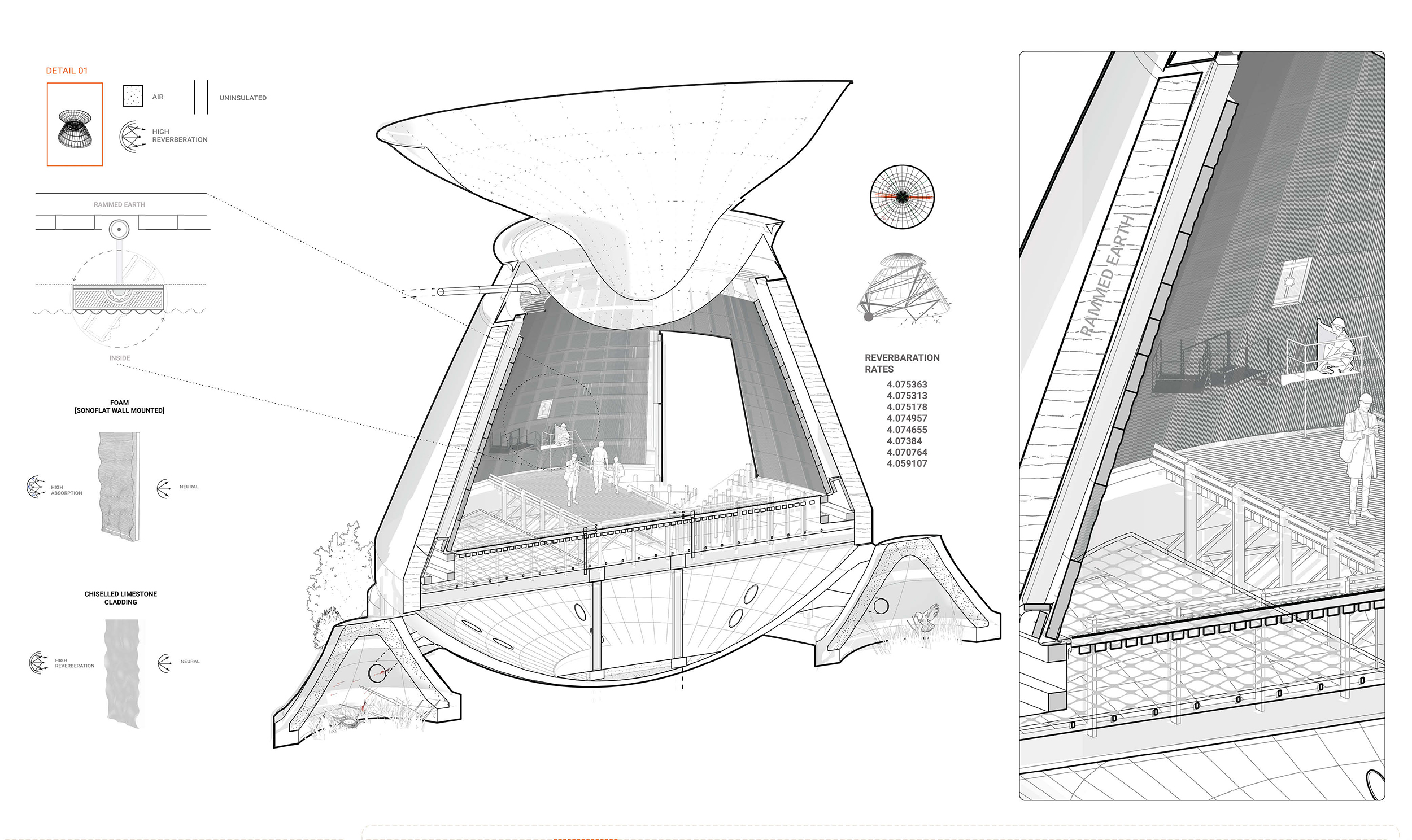Hannah Ismail
Year 1 MArch
ANTHROPOSOUND
Animalia Park & Centre
The Fens, UK
Soundscapes are vital indicators of species' communication and behaviour within the natural environment. Anthropogenic noise can disrupt, disconnect, and fragment these natural soundscapes, causing shifts in behaviour that could disrupt the natural patterns and movements of species. This disruption has been observed to reduce habitat quality, leading to declining biodiversity and specific species populations.
Project ‘ASAPC’ Anthroposound Animalia Park & Centre aims to explore the potential role of architecture and soundscapes in addressing issues of habitat fragmentation at both territorial and inhabited scales for non-human actors. The project envisions an area of declining habitat adjacent to Huntington, Cambridgeshire, transforming it into a new nature reserve, The Great Fen.
Using computational acoustic exercises, the project simulates and maps the immaterial 'flow' of sound to gain insights into the site's physical properties and ecological inhabitants, focusing on the warbler bird and field grasshopper. At the architectural scale, the project presents an education centre for families, nature enthusiasts, and soundscape ecologists. This centre is designed to offer sensory environments that acoustically respond to these species' seasonal behaviours and movements.
The park, as a monitored territory, and the centre, as an interface to this unseen activity, are envisioned as valuable tools for improving ecological literacy and understanding of soundscapes. Additionally, the project aims to highlight how these non-human soundscapes are impacted by manageable anthropogenic activities and the unavoidable climatic changes anticipated in the landscape over the coming century.








︎︎︎ Home
︎︎︎ Previous // Next ︎︎︎